In addition to the coloured woven silk bands, some Schwalm women owned special apron waistbands. Reflecting their owner’s prosperity or dexterity, these special waistbands were accordingly very different from one another.
So, there were narrow monochromatic silk ribbons that were sewn upon the dark aprons waistbands
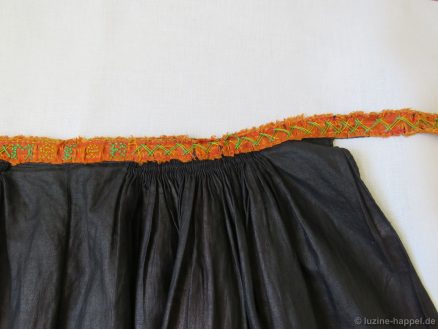 and then decorated with initials and small ornaments in Cross stitch and different coloured stitches.
and then decorated with initials and small ornaments in Cross stitch and different coloured stitches.
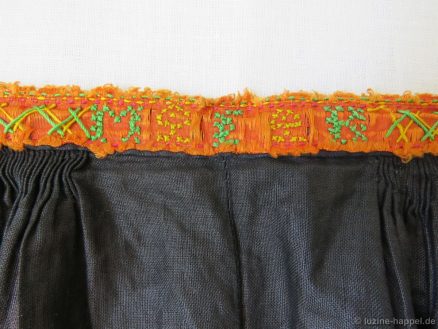 But there were much more elaborate bands worked to simulate a girdle. The unlined back side of such a band shows how it was made. A strong linen strip (ecru) was covered with a wider linen strip (blue), which was folded to the back over the edges. Small green silk ribbons were fastened at the edges.
But there were much more elaborate bands worked to simulate a girdle. The unlined back side of such a band shows how it was made. A strong linen strip (ecru) was covered with a wider linen strip (blue), which was folded to the back over the edges. Small green silk ribbons were fastened at the edges.
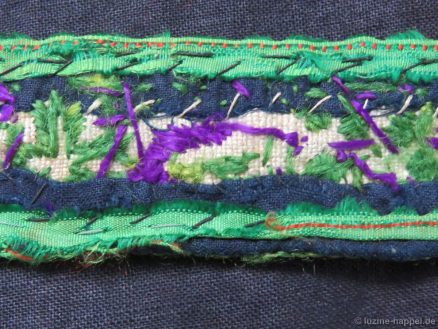 On the front different paper board shapes were fastened. The templates were embroidered with silk threads (lilac) and woolen yarn (green) with densely worked Satin stitches.
On the front different paper board shapes were fastened. The templates were embroidered with silk threads (lilac) and woolen yarn (green) with densely worked Satin stitches.
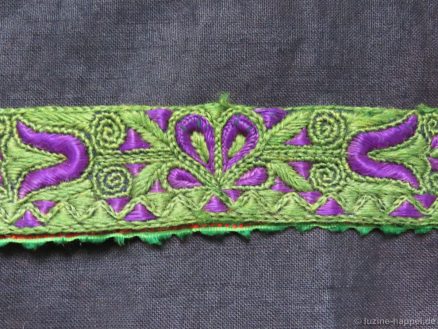 Spaces between the template sections were painstakingly filled with Coral Knot stitches, Blanket stitches, Chain stitches, and Satin stitches.
Spaces between the template sections were painstakingly filled with Coral Knot stitches, Blanket stitches, Chain stitches, and Satin stitches.
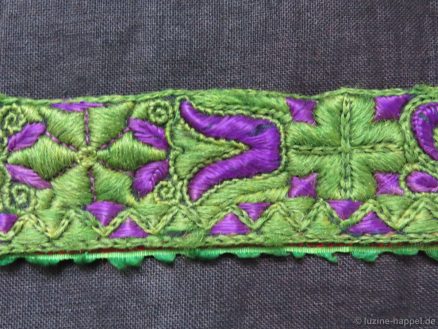 The main motifs in this example are heart, tulip, star, and cross.
The main motifs in this example are heart, tulip, star, and cross.
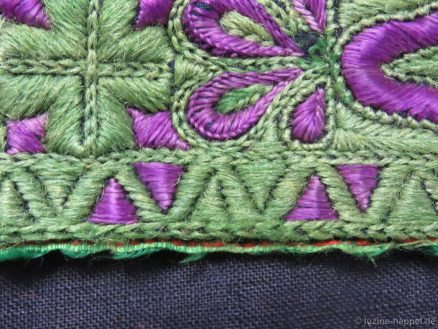 At the edges small borders were embroidered in a zigzag line.
At the edges small borders were embroidered in a zigzag line.
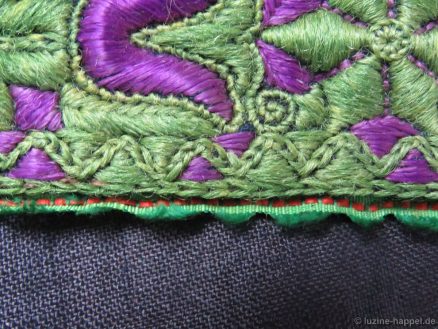 In the back, the waistbands were fastened with a gold-plated clasp – the small chains enabled the waistband to be adjusted to fit different girths.
In the back, the waistbands were fastened with a gold-plated clasp – the small chains enabled the waistband to be adjusted to fit different girths.
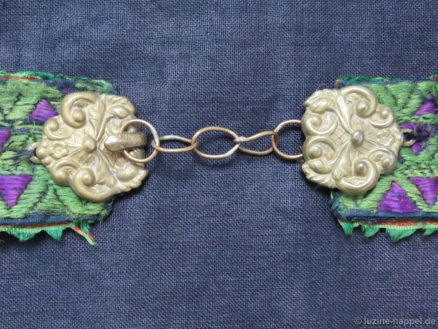 A band embroidered with silk threads only is very colourful. A green silk ribbon was laid onto a wider red silk ribbon. The templates were fastened onto the green ribbon
A band embroidered with silk threads only is very colourful. A green silk ribbon was laid onto a wider red silk ribbon. The templates were fastened onto the green ribbon
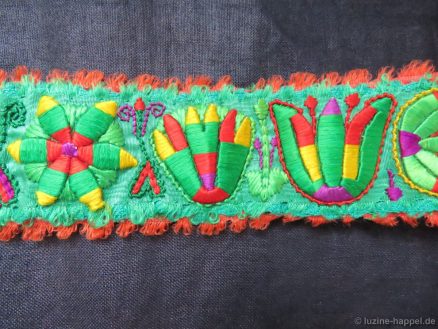 and embroidered with different colours.
and embroidered with different colours.
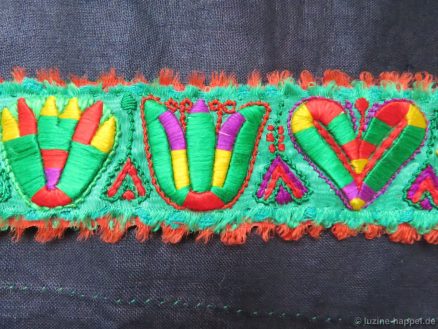 The spaces between the heart, tulip, star, and other motifs were only partially embroidered so that the silk ribbon can be seen.
The spaces between the heart, tulip, star, and other motifs were only partially embroidered so that the silk ribbon can be seen.
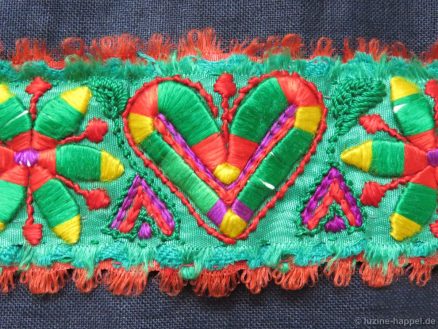 This apron waistband was lined with a colourful cotton fabric.
This apron waistband was lined with a colourful cotton fabric.
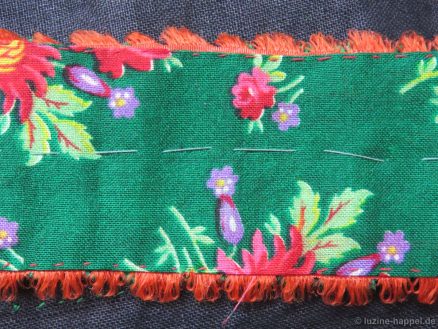 This apron waistband was also closed with a gold-plated clasp.
This apron waistband was also closed with a gold-plated clasp.
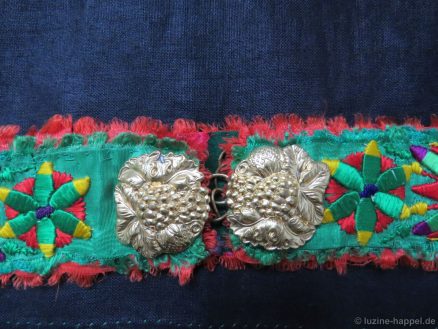 These special apron waistbands were fanciful and established a special splendor, but only wealthy women were able to afford such elaborate bands. The majority had to be content with the coloured woven silk bands.
These special apron waistbands were fanciful and established a special splendor, but only wealthy women were able to afford such elaborate bands. The majority had to be content with the coloured woven silk bands.


Leave a Reply